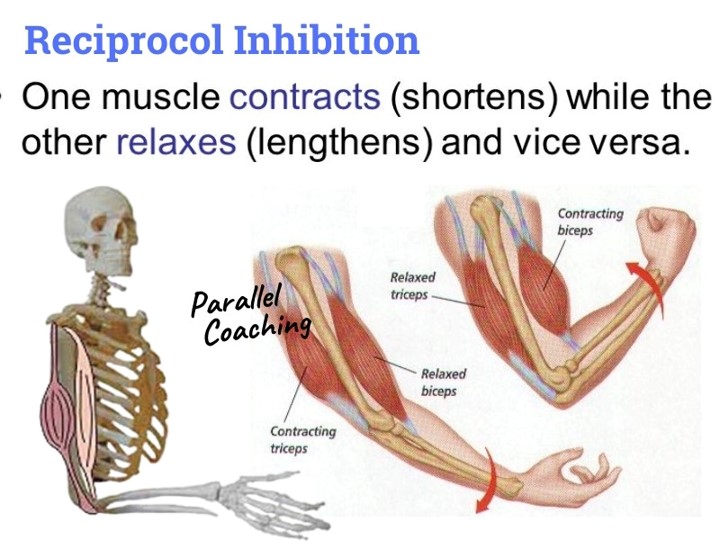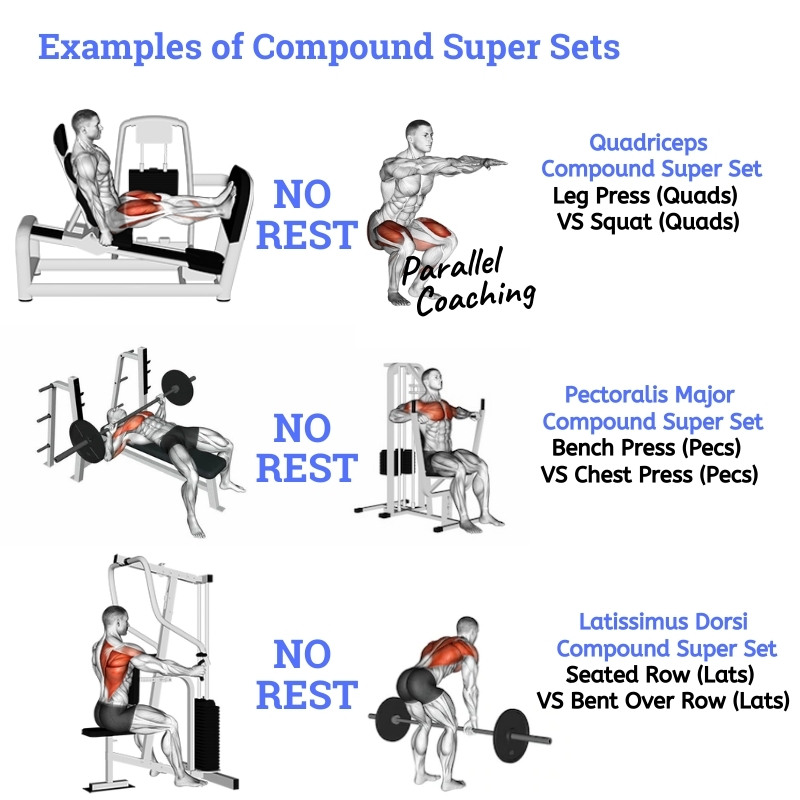Today’s blog will explore The Difference Between Compound Supersets And AA Supersets. Plus you’ll learn the #1 Mistake FITPROs make when planning supersets.
If you are working towards your Level 3 Personal Trainer Qualification, supersets are one of the 17 resistance training systems that you need to be able to plan and instruct… but how do you plan a superset effectively?
Read the text below, then test your knowledge with three mock questions.
Supersets are the most commonly miss-planned training system.
A superset “uses the performance of two exercises with no rest between each exercise.”
eg. Exercise 1 | NO REST | Exercise 2 = Superset

Yet… here lies the BIGGEST FITPRO planning problem…
All too often FITPROs plan for any two exercises performed in succession and dub them a superset.
But That’s Not The Case…
There are two types of Supersets
- Agonist – Antagonist Superset
- Compound Superset
And both have a clear set of rules that determine what exercise can be used.
Note: A Superset is NOT just any two exercises with no rest in-between.
Let’s explore the Agonist – Antagonist Supersets
and to do so we must know some Anatomy Facts:
All muscles work in pairs.
Another way of saying this is, Agonist-Antagonist pairings. An agonist is the prime mover muscle and the antagonist is the opposing muscle.
Crucially, when the prime mover contracts the opposing antagonist muscle MUST relax and lengthen.
This is called Recipricol Inhibition.

The Agonist – Antagonist superset utilises reciprocal inhibition, which is why rest is not required between the exercises.
During exercise 1, the antagonist is resting, making it ready to contract maximally for exercise 2.
Check out the image below for AA Superset examples.

To get the most out of each AA superset limit the amount of rest time between exercises… ideally 5 seconds or less.
The rest time allocated at the end of each working set is determined by the number of repetitions performed eg. 12 reps is 60 seconds of rest.
Note: You do not double the rest time based on two exercises being performed.
Let’s explore Compound Supersets
Here both exercise 1 and exercise 2 target the same prime mover.
Now here’s the key rule to follow:
Both exercises MUST either be compound (multiple joint or both exercises MUST be isolation (single joint).
The BIGGEST benefit is the same prime mover muscle gets double overload before any rest.
Also, both exercises target slightly different muscle fibres of the same muscle, meaning the prime mover is fully exhausted.
If you plan for a combination of compound and isolation exercises on the same prime mover then you’ll mistakenly be planning a pre/post exhaust training system.
NOTE: Do not confuse the term “compound supersets with the term compound (multi-joint) exercises”.
These are two different things.
Check out the image below for compound Superset examples.

Ideally, you’d perform the same amount of reps on both exercises eg. 12 reps on exercise 1 and then 12 reps on exercise 2.
The rep range you plan for should suit your client’s goal and phase of training.
In Summary
- Supersets have clear set rules or set variables.
- A Superset is NOT just any two exercises back-to-back.
- An Agonist-Antagonist Superset utilises reciprocal inhibition of muscle pairings.
- An AA Superset must have two compound exercises or two isolation exercises BUT not one of each.
- A Superset (AA) must have both exercises in the horizontal (sagittal) plane or both exercises in the vertical (frontal) plane, BUT not one of each.
- A compound superset targets the same prime mover muscle.
- A compound Superset must have two compound exercises or two isolation exercises BUT not one of each.
- In both Supersets, the two exercises have the same rep range.
- Rest time in both types of Supersets is allocated from the rep range and is not doubled based on two exercises being performed.
- Rest time between the two exercises is little to none.
There’s not just one Resistance Training System
There are over 17 resistance training systems that are taught in the Level 3 PT syllabus which can be overwhelming to distinguish which system to use and when. to plan them. Our FIT-Progressions online programme breaks down each of these in detail with clear protocol to follow for each one.
Plus you learn how to periodise your planning of these systems to allow for logical progressive overload so your client can get their goal every time.
>>>> Join us for FIT-Progressions here

Become a knowledgeable and confident FITPRO, with a clear strategy to get results with your clients every time.
There’s no more self-doubt. There’s no more guessing what to plan or how to get client results. FIT-Progressions has 8 modules and 18 video tutorials that guide you through every stage of your Level 3 Personal Trainer case study, and how to work with clients effectively.
This is for you if you’re…
- struggling to complete your coursework for PT, Yoga, or Pilates
- a newly qualified FITPRO that feels stuck or overwhelmed
- unsure where to start when planning a client session
- worrying about applying your course knowledge with a real client
- doubting you could get results and lack structure to client packages
- anxious and confused about how to get found and get busy
Click the link to find out more and join us:
https://courses.parallelcoaching.co.uk/products/fit-progressions/
Test your knowledge with today’s planning mock questions:
[NOTE: The answers are below the 3rd question]
Q1: Which of the following is an example of a compound superset?
A. Bench Press followed by Shoulder Press
B. Shoulder Press followed by Lateral Raise
C. Bench Press followed by Press Up
D. Press Up followed by Bent Over Row
Q2: Which statement about Compound Supersets and AA Supersets is FALSE?
A. An AA Superset utilises reciprocal inhibition of muscle pairings.
B. Rest time between the two exercises is little to none.
C. A Superset is any two exercises back-to-back.
D. A compound superset targets the same prime mover muscle.
Q3: What is reciprocal inhibition?
A. When the prime mover contracts the synergist muscle must relax and lengthen
B. When the prime mover contracts the opposing antagonist muscle must relax and lengthen
C. When the antagonist contracts the opposing antagonist muscle must relax and lengthen
D. When the synergist contracts the agonist muscle must relax and lengthen
Answers to the mock questions are :
Question 1= C, Question 2 = C, Question 3 = B
If you want more mock questions like this, then you can download more Free Mock Questions: DOWNLOAD NOW
Dedicated to More
Hayley “Compound Supersets And AA Supersets” Bergman
Parallel Coaching
P.S. You can also find us on the following platforms:
Instagram: https://www.instagram.com/parallelcoaching
Facebook: https://www.facebook.com/ParallelCoaching
Twitter: https://twitter.com/ParallelCoach
YouTube: http://bit.ly/2F1Z1bs
Read more Planning blogs: HERE

